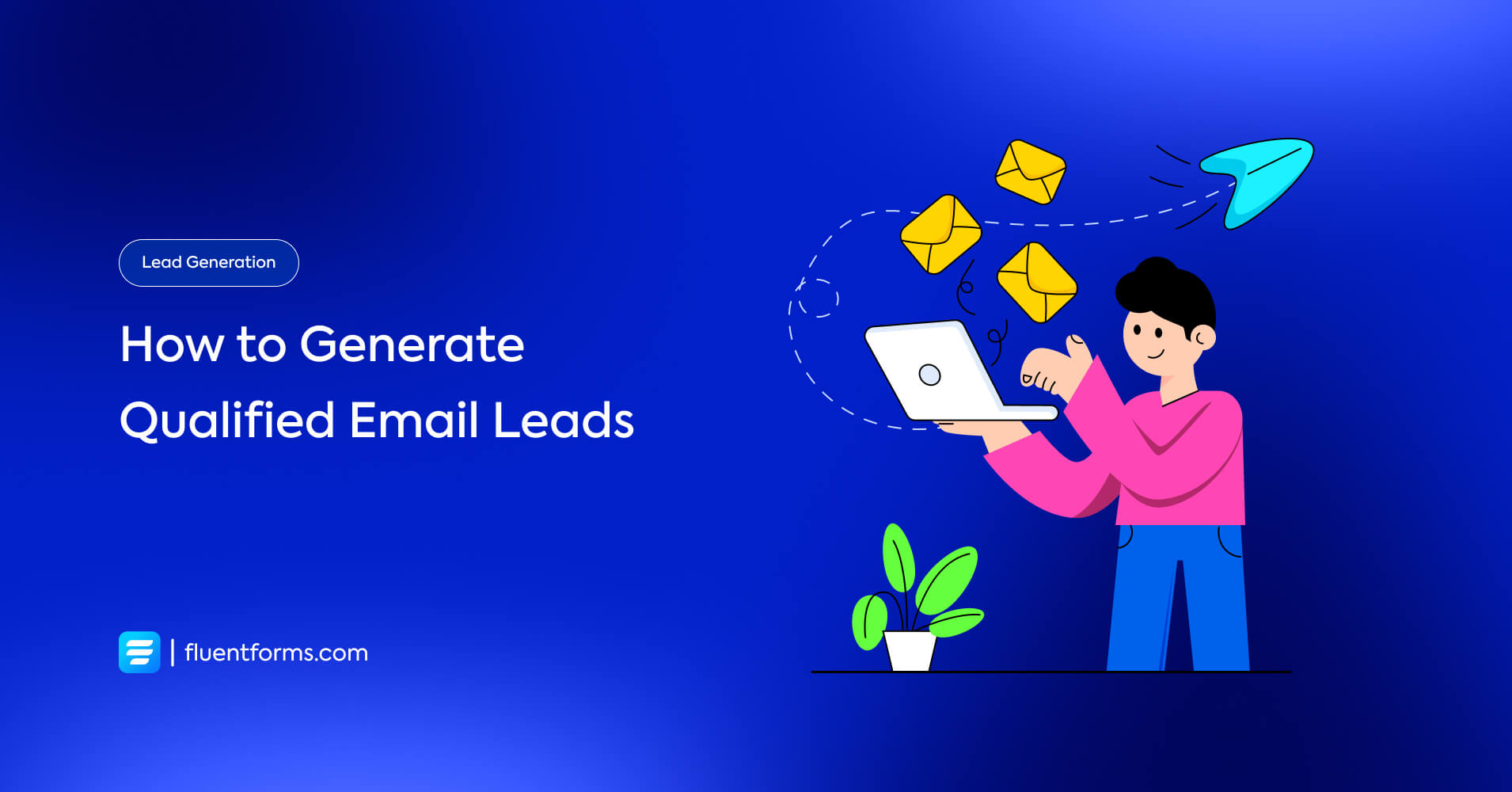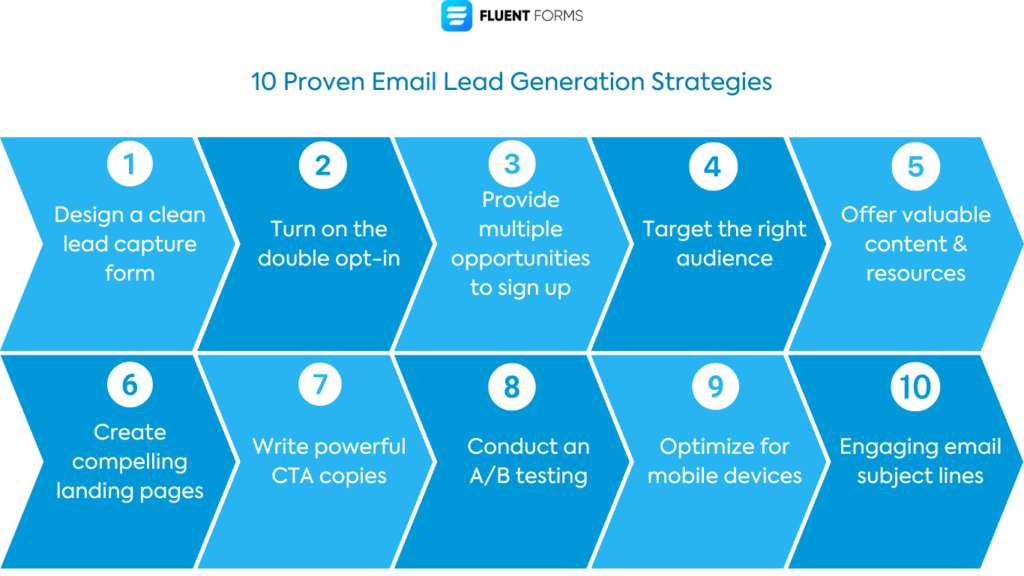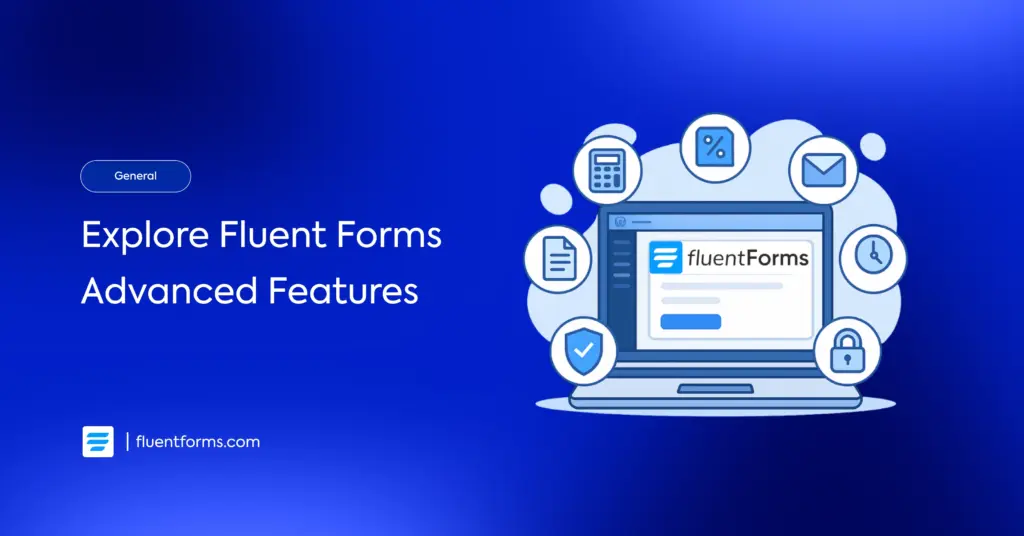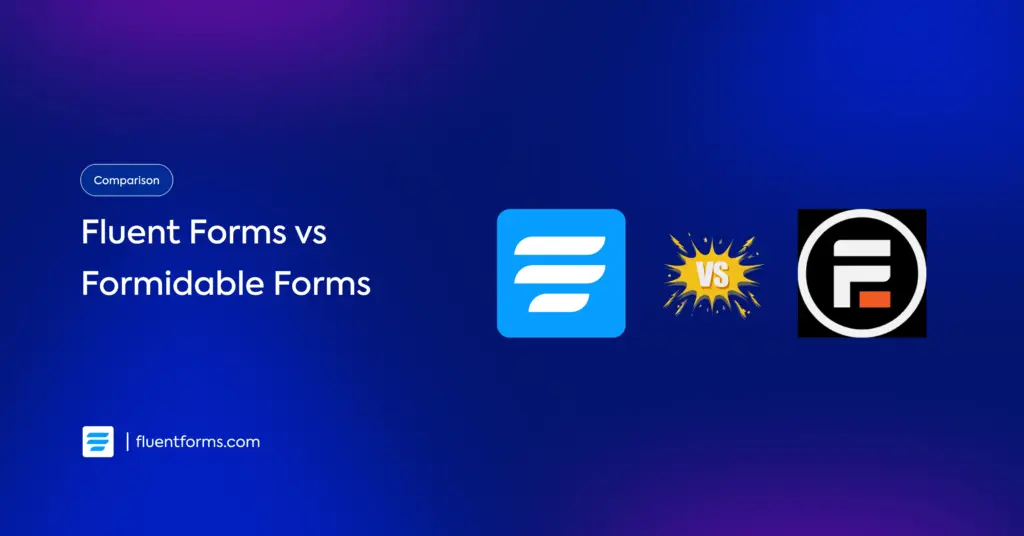How to Generate Qualified Email Leads: Top Strategies & Tools

You’ve spent weeks driving traffic to your website, yet the number of email subscribers is barely moving. You’re running campaigns, sharing content, and even offering discounts, but the leads just aren’t rushing in like you expected.
You feel pressure as you watch competitors grow their email lists effortlessly while your efforts seem to not bring results. And you’re not alone. This is a common struggle many businesses face—effectively capturing and nurturing email leads in a crowded digital market space.
Fortunately, the right strategies and tools can turn this crisis around. In this blog, we’ll explore proven email lead generation strategies and the top tools to help you build a high-quality, engaged email list that multiplies conversions and leads your business toward steady success.
What’s an email lead
An email lead is a potential customer who has expressed interest in your business by providing their email address. This usually happens when someone signs up for a newsletter, downloads a resource like an eBook, or fills out a form on your website. And when potential buyers willingly share their email with you, they’re indicating that they’re open to hearing more about what you have to offer.
Email leads are valuable because they give you a direct line of communication with potential customers. Unlike social media followers or website visitors, email leads take an active step to connect with your brand. This makes them more likely to engage with your content and, eventually, convert into paying customers.
The key to making the most of your email leads is to nurture them effectively. This involves sending them relevant, helpful content that guides them through their customer journey. Whether it’s through newsletters, special offers, or personalized recommendations, the goal is to build trust and keep your brand top-of-mind until they’re ready to make a purchase.
10 Proven email lead generation strategies
Generating email leads effectively requires a strategic approach. It’s more than just collecting email addresses; it’s about attracting the right leads and setting the stage for future engagement. Here are ten proven strategies to help you build an effective email list and turn potential buyers into loyal customers.

1. Design a clean lead capture form
A clean and simple lead capture form is essential for converting visitors into email leads. Because people are more likely to fill out a form that’s easy to use and visually appealing.
Keep the form short, asking only for essential information like a name and email address. Too many fields or a cluttered look can be overwhelming and might discourage sign-ups.
Make sure that the form placement, size, and color easily catch attention but are not unpleasant to the eye. If you use inline newsletter forms, the symmetry results in a higher conversion rate.
Finally, consider adding a privacy statement to reassure users that their information is secure. Moreover, you can mention that they can unsubscribe anytime; this way, they can subscribe without feeling pressured to continue.
2. Turn on the double opt-in
Using a double opt-in process ensures that your email leads are genuinely interested in your content. It reduces the likelihood of spammy, bot, or fake sign-ups, leading to a more engaged email list.
After someone signs up, send them a confirmation email with a button or link they need to click to confirm their subscription. This extra step helps you maintain a clean and high-quality email list.
Moreover, customize your confirmation email to reflect your brand’s values and make the opt-in process seamless.
3. Provide multiple opportunities to sign up
Don’t rely on a single sign-up form to capture all your leads. People interact with your website in different ways and may be motivated to sign up at separate points, so offering multiple sign-up opportunities increases the chances of capturing more leads.
Place sign-up forms in various locations on your website—like your homepage, landing pages, blog posts, and footer. You can also include pop-ups, exit-intent forms, or even a sign-up option during checkout.
Be strategic about where you place your forms to avoid overwhelming users. Ensure they appear naturally within the flow of your website.
4. Target the right audience
If you fail to target the right demographics, your marketing and email lead-generation efforts are less likely to succeed. Because it will confuse your website visitors about whether your products and services are the right deal for them.
Besides, generating leads is more about quality than quantity. Because a large list of uninterested subscribers won’t drive results. For this reason, targeting the right audience is crucial for capturing quality email leads. This way, you get to nurture the right audience throughout their buyer’s journey.
Create and revise your ideal buyer personas, and segment your audience based on interests and behavior. This helps ensure that your sign-up forms and lead magnets reach the right people. Use targeted advertising on multiple platforms.
Continuously refine your targeting strategy by analyzing the performance of your campaigns, and then adjust your audience demography accordingly.
5. Offer valuable content & resources
People are more likely to give you their email address if they know they’ll receive something of value in return. Besides, valuable content demonstrates your expertise and builds trust, giving your potential customers a reason to stay connected.
Offer lead magnets like eBooks, webinars, or exclusive discounts in exchange for an email address. Make sure the content directly addresses your audience’s needs and pain points.
Regularly update and diversify your lead magnets to keep them relevant and appealing to your audience.
6. Create compelling landing pages
A well-designed landing page can significantly boost your email lead-generation efforts. It takes the visitor’s attention to a single goal: signing up.
Your landing page should be clear and focused, with a compelling headline, a concise description of what you’re offering, and a strong call-to-action (CTA). Keep distractions to a minimum and ensure that the page is visually appealing.
Create a sense of urgency by adding a countdown (time, number of tickets, etc) with exclusive offers, it creates a fear of missing out (FOMO) among your customers and works as a great motivator.
Use testimonials, social proof, or guarantees on your landing page to build trust and increase conversions.
7. Write powerful CTA copies
The call-to-action (CTA) is the key element that boosts conversions on your lead capture forms. It’s the final nudge that convinces a visitor to sign up.
Use action-oriented, persuasive language in your CTA. Instead of generic phrases like “Submit,” try something more engaging like “Get Free Guide Now” or “Let’s Work Together.”
Match your CTA tone with the overall message of your landing page. It creates a cohesive and persuasive user experience. Get creative, and use a tone that resonates with your audience’s sentiment. You can add a little humor as well as long as it’s not offensive to anyone.
Test different CTA copies to see what works best with your audience. Small adjustments can lead to significant improvements in conversion rates.
8. Conduct A/B testing
A/B testing allows you to optimize your email lead generation efforts by comparing different versions of your forms, landing pages, and CTAs. It helps you understand what works best for your audience. You get to make a data-driven decision leading to a higher conversion rate.
Test one element at a time, such as the headline, form length, or CTA color. Analyze the results to determine which version performs better and implement the changes.
Keep a record of your tests and their outcomes so you can apply successful strategies to future campaigns.
9. Optimize for mobile devices
With the majority of internet traffic now coming from mobile devices, mobile device optimization is non-negotiable.
A poor mobile experience can lead to user frustration and lost leads. Ensure that your forms and landing pages are responsive, with easy-to-read texts, simple navigation, and large enough buttons for a small screen.
Test your forms and landing pages on various devices to ensure they look and function well across all screen sizes and both light & dark displays.
10. Craft engaging email subject lines
Once you’ve captured the email leads, you have to guide your subscribers to convert into paying customers and make sure that they don’t unsubscribe.
To direct your subscribers towards conversion, first, you have to ensure that they open your emails. Unless they open the emails, they won’t come across your valuable content that’d motivate them to convert. Headlines play a major role in whether your email gets opened.
Write subject lines that are clear, creative, intriguing, and relevant to the content inside. Personalization, humor, and urgency can also help increase open rates. Make sure they don’t sound like clickbait.
Experiment with different subject lines in A/B tests to see what resonates most with your audience. Additionally, use an email signature that reflects your brand. Keep an eye on open rates to assess email success.
By applying these strategies, you can build a high-quality email list that not only grows over time but also consists of engaged, interested subscribers. This approach ensures that your email marketing efforts are both effective and sustainable, ensuring long-term results for your business.
Top tools to generate email leads seamlessly
Choosing the right tools can make a significant difference in how efficiently you generate and manage email leads. Here’s a brief overview of some of the top tools that can help you streamline your email lead generation efforts, along with their notable features.
1. FluentCRM
FluentCRM is the email marketing automation dream for WordPress users. It’s an all-in-one email marketing solution including lead and customer management, email campaigns, automated email sequencing, learner and affiliate management, monitoring user activities, etc.
Features:
- Send or schedule unlimited email campaigns
- Integrated forms and post-form submission automation
- Smart contact segmentation by analyzing user behavior
- Filter or search customers by list or tags
- Automation for customer onboarding
- Automatic contacts importing from CSV/WP Users/WooCommerce customers
- Saving and storing all pre-written email copies to use for later
- Dynamic smart code like name or the country to personalize the emails
- Detail reporting about the open and click rates
- Full business insight from the dashboard using graphs, charts, and data widgets.
Are you a WordPress user looking for a round-the-clock email marketing solution? Check out the pricing to grab the right plan for your business now!
2. HubSpot
HubSpot is a comprehensive marketing platform that offers a variety of tools for email lead generation, including CRM, email marketing, and lead capture forms.
Features:
- Higher email open rates with AI-generated subject lines and email copy
- Integrated CRM to manage leads from capture to conversion
- Improves opens and clicks with personalization
- Drag-and-drop editing features
- Customizable templates for newsletters, events, and more
- Advanced segmentation and targeting options
- Built-in analytics to track performance and ROI
- A/B testing
- Automated workflows after sending emails for lead nurturing
Like the features? Have a look at the pricing to determine if they’re the right fit for you.
3. ConvertKit
ConvertKit is an email marketing platform designed specifically for creators, bloggers, and small businesses. It focuses on helping you grow your audience and build meaningful relationships with your subscribers.
Features:
- Unlimited easy-to-use email capture forms and landing pages
- Smart filter to control who gets sent which email
- Graph and stat to display email performance.
- Visual automation builder for personalized email sequences
- Automated tagging based on subscriber actions for targeted campaigns
- Simple, intuitive interface with powerful functionality
- Inline styling options to add buttons, images, or videos to emails
- Integrations with popular tools like WordPress and Shopify
If these features are what you’re looking for, check out the pricing plan of this freemium tool.
4. Cognism
Cognism is a lead generation tool that specializes in B2B email leads, helping sales teams find and connect with potential customers through data-driven insights.
Features:
- Access to a large database of verified B2B contacts
- AI-powered lead enrichment for accurate targeting
- GDPR-compliant data processing and lead generation
- Integration with popular CRMs like Salesforce, Hubspot, Outreach, etc.
- Real-time person and company-level data updates to keep your lead lists fresh
Have a look at their pricing page.
5. Kaspr
Kaspr is a lead generation tool that focuses on social selling, allowing you to capture contact information directly from LinkedIn profiles to build your email list.
Features:
- Easy onboarding
- Extracts data from LinkedIn, Sales Nav, Recruiter Lite, etc.
- Chrome extension for seamless LinkedIn integration
- Automated lead generation and workflow performance analysis
- Real-time data updates to ensure accuracy
- Exports contacts to your CRM or email marketing platform
See the current pricing of the Kaspr freemium plan.
6. Mailchimp
Mailchimp is one of the most popular email marketing platforms, known for its ease of use and comprehensive features for businesses of all sizes.
Features:
- All-in-one marketing platform with email, landing pages, and forms
- Pre-built email templates and a drag-and-drop editor
- Advanced audience segmentation and personalization
- Integrated analytics and reporting tools
- Automation features for lead nurturing and follow-up campaigns
- Generative AI for composing engaging emails
Check out Mailchimp pricing here, including their free forever plan.
These tools offer various features tailored to different needs, whether you’re looking to capture leads through forms, automate email sequences, or manage a large database of contacts.
By selecting the right tool for your business, you can simplify your lead-generation efforts and focus on nurturing relationships with your audience. Moreover, all of these tools are scalable and equipped to help as your business grows.
What’s next
Generating email leads isn’t difficult or confusing anymore. By implementing the right strategies—like designing clean capture forms, targeting the right audience, and offering value—you can steadily grow a fruitful email list.
Pair these tactics with powerful tools like HubSpot, ConvertKit, or Mailchimp, and you’ll be well on your way to building a list of engaged subscribers who are ready to connect with your brand.
Whether you’re just starting out or looking to refine your approach, these insights will help you transform your email lead generation efforts into a key strategy for your business’s success.
You only need to utilize the tools smartly to nurture your email leads along the right path toward conversion. Last but not least, remember that consistency is the key to achieving success in your endeavors.
Let us know what you think of these strategies, and share your favorite email lead-generation tool in the comments!







Leave a Reply